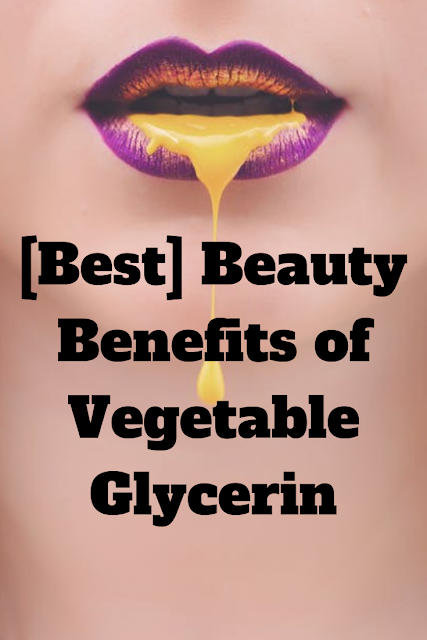When you read glycerin on a cosmetic, what is it really about? I now offer some advice on glycerin as an ingredient in your cosmetics. What it is and how to use it. Full of practical tips with glycerin, you’ll want some at home! In the vegetal department, glycerin is a good product to have at home if you like to make your own cosmetics or use grandmother’s tricks in everyday life or for the household.
what is vegetable glycerin?
It is a clear, colorless syrupy liquid, sold in drugstores or on the internet, used as an emollient, moisturizing agent, or as a mild solvent. It results from the saponification of a fatty substance (when you mix soda with oil, a reaction occurs, which creates glycerine soap. I remind you that cold soaps are naturally rich in natural glycerin. to industrial soaps because if we add salts or others, we can extract glycerine and this is what make soap brands to sell them.
Uses of the Vegetable Glycerin
Glycerine can be mixed with water or alcohol but not with oil. Good glycerin for cosmetic use or well-being must be 100% vegetable, guaranteed GMO-free (because it can come from soy) and composed of pure vegetable glycerine, glycerol. I recommend glycerine that carries the Slow Cosmetic Mention.
For a glycerine macerate of plants, which is often used in herbal medicine, 50/50 of water and glycerine are mixed and plants are macerated in the liquid for several weeks. For home-made cosmetic care that is desired more hydrating or plumping, the vegetable glycerin is dosed from 2 to 7% of the total mixture, by dispersing it beforehand in the aqueous phase if it is an emulsion that is prepared. Be careful, if you put too much, the effect will be the opposite and glycerin will dry the skin!
Improves dry, flaky skin: Glycerine helps to form a barrier on the skin which helps to trap moisture. It also helps prevent toxins from entering the skin. The combination of both helps to significantly reduce the inflammation associated with certain skin conditions.
My super moisturizing cream: If you have a neutral cream or very simple in terms of its formula, you can make it more moisturizing by adding 2% maximum of glycerin. If your pot is 50ml, it means that you can add 1ml of glycerin in the cream pot. Take a graduated plastic syringe to the nearest ml to measure 1ml.
Pour into the pot and stir with a clean spatula, or even better, whip again to spread evenly. I advise for this use the neutral cream of Saint Hilaire or the light cream of Senz or the base cream face of Bioflore. I say that this is not ideal and ideally should have included glycerin initially in the phrase “water” before emulsifying. But since here we use a cream ready-made, we will accommodate well by stirring carefully
Natural shampoo: You can make a natural shampoo using vegetable glycerin that can show effective results. To make a shampoo, mix a ½ cup of vegetable glycerin with a ½ cup of thick coconut milk. Now add about 12 drops of essential oils. You can choose rosemary, cedar, and vetiver. Now you can apply the mixture on your scalp, your hair and your locks of hair. This is advisable if your skin is very dry and tight all over after washing.
Keeps lips hydrated: Certainly, you will not have the lips “silicone”, but if you find a relatively natural trade gloss, colored or transparent, you can add 1% vegetable glycerin maxi. It is then necessary to measure with the syringe and to inject the glycerine into the gloss before dispersing it well with the help of the applicator.
If your gloss is greasy, glycerin does not mix well. Effect more moisturizing and plumping guaranteed, but do not fool yourself in the dosage! For a gloss of 10 ml (small bottle), it should not more than 0.1ml, or 1 drop of glycerine.
A little vegetable glycerin can be mixed with shavings of Marseille soap and lots of water in a basin, wash delicate linen, woolen fabrics and make the fabric softer and more flexible.
You must have seen many soaps and lotions that contain vegetable glycerin. That’s why we’re going to talk to you about the incredible benefits of using glycerin for your skin. Instead of using all products containing glycerine, why not use it in its natural form, right? So, here are all the ways you can use vegetable glycerin for your skin care!
Does vegetable glycerin have side effects?
Negative reactions of vegetable glycerin are extremely rare. The use of exhaled glycerin may cause side effects such as redness, rash, and hives when used on the skin. If any of these side effects are noted, stop using glycerin immediately. Some people note that the use of raw glycerin on the skin causes dryness. This is because glycerin is a humectant and can draw water from your skin. This problem can be completely avoided by using only diluted glycerin


![[Best] Beauty Benefits of Vegetable Glycerin Beauty Benefits of Vegetable Glycerin](https://1.bp.blogspot.com/-ET4xJpQCNUc/XLyAtALHtrI/AAAAAAAADWI/o25weq0-EAANeGAMwzbbUp7_V9dMFdFtgCLcBGAs/s640/%255BBest%255D%2BBeauty%2BBenefits%2Bof%2BVegetable%2BGlycerin.png)